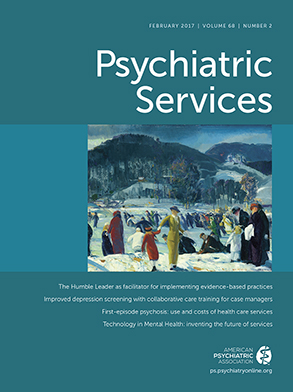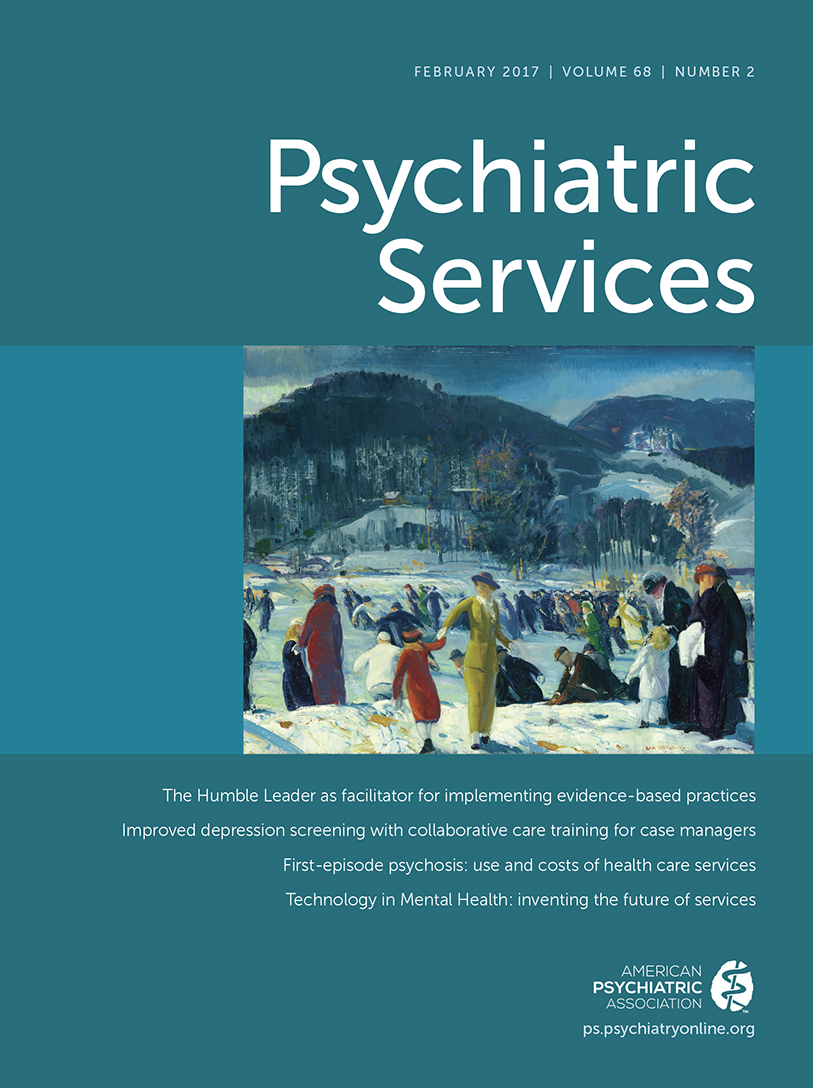Institutionalized persons with mental illness and prisoners represent two particularly vulnerable populations. For individuals residing in inpatient psychiatric settings, research protections remain fragmented across state laws and federal regulations, a situation that has led some to call for a moratorium on the recruitment of this extremely vulnerable population (
1). Meanwhile, in recent years, mechanisms of jail diversion—such as drug and mental health courts—for offenders with mental illness have been developed that challenge our understanding of the concept of “prisoner.”
There now exists a large population of individuals treated in the community as a result of a diverse array of structured mandated community treatment programs, which span the social welfare and criminal justice systems (
2). For example, individuals with serious mental illness who are at risk of deteriorating and being committed to a psychiatric hospital or incarcerated may now live in the community with close court supervision under a regimen commonly referred to as assisted outpatient treatment (AOT). Many individuals on AOT have a serious psychosis spectrum disorder, such as schizophrenia, and without treatment they may decompensate. A subpopulation of this group also has substance use disorders.
We should note that other ways to enhance treatment compliance exist. These range from voluntary treatment contracts to social service providers that use housing opportunities or financial incentives as leverage for compliance. These cases are distinct from AOT—which requires a court mandate—although the range of coercion within specific AOT regimens may vary.
The ethical principles promulgated by the National Commission for the Protection of Human Subjects of Biomedical and Behavioral Research in the
Belmont Report (
3) have guided research involving vulnerable populations for the past 35 years. These principles were adapted in regulations for federally funded research in the Common Rule (
4). Subpart C of the Common Rule pertains to the protection of prisoners, a class defined as “any individual involuntarily confined or detained in a penal institution. The term is intended to encompass individuals sentenced to such an institution under a criminal or civil statute, individuals detained in other facilities by virtue of statutes or commitment procedures which provide alternatives to criminal prosecution or incarceration in a penal institution, and individuals detained pending arraignment, trial, or sentencing” (
4).
In 2007, a committee of the Institute of Medicine (IOM)—now the National Academy of Medicine—issued a report,
Ethical Considerations for Research Involving Prisoners (
5). Recognizing that the concept of prisoner goes beyond custodial confinement, the report recommended expanding the term
“to include all settings, whether a correctional institution or a community setting, in which a person’s liberty is restricted by the criminal justice system.” This includes persons on parole, probation, or work release programs. The IOM report excluded those whose liberty has been restricted because of mental illness—ostensibly this would include persons on AOT. Likewise, the committee suggested that individuals who have been through mental health courts should count as prisoners and concluded the opposite for individuals who have been ordered to adhere to mandated treatment by way of juvenile, probate, and civil courts. However, because these individuals often traverse both the criminal and civil court systems and the juridical mechanisms for placing individuals into AOT programs vary from state to state, such fine-grained distinctions may create untenable challenges for researchers in developing compliant recruitment strategies and protocols.
For example, investigators leading a multicenter study (CTN-0051) funded by the National Institute on Drug Abuse confronted the dilemma of how to appropriately recruit individuals from a generalizable sample that likely included individuals on AOT (
6). They consulted the Office of Human Research Protections, which applied 45 CFR 46 §306 (iv); this section states, in part, that “biomedical or behavioral research conducted or supported by DHHS may involve prisoners as subjects only if in the judgment of the Secretary the proposed research involves solely the following: research on practices, both innovative and accepted, which have the intent and reasonable probability of improving the health or well-being of the subject (
7).”
There are several advantages to application of this rule for a population that likely includes individuals involved in court-mandated treatment. It simplifies matters, obviating the need for study personnel to determine and monitor an individual participant’s involvement in the civil courts or the criminal justice system—a potentially complex and costly endeavor. However, such a designation may come at a greater cost, because without a clear designation, all potential research participants are to be treated as prisoners, which increases the time and cost of protocol development, oversight, and execution of the study and shifts the standard by which minimal risk is determined.
The case of CTN-0051 should prompt a question for mental health and addiction researchers, institutional review boards (IRBs), and policy makers: Should individuals committed to AOT be considered institutionalized patients, prisoners, community members, or something else? As far as we can tell, very little has been written to answer this question. Although research has been and continues to be conducted with this population, as CTN-0051 illustrates, there remains no obvious consensus on how to treat these individuals. The lack of both consensus and careful analysis may engender confusion among researchers and IRBs about the proper way to categorize these individuals.
A lack of policy consensus places individuals on AOT into a conceptual limbo bounded by the concepts of psychiatric inpatient and community member. To bring clarity to this situation, we propose that a new designation—“restricted community member” (RCM)—be created that more accurately reflects the uniquely vulnerable position of individuals on AOT while also offering these individuals a broader range of opportunities to participate, if they wish, in research than is afforded to an incarcerated prisoner or a patient in a psychiatric hospital or recovery center.
RCMs
We recognize that RCMs constitute a “doubly vulnerable population”: they are both mentally ill and under strict court supervision. Although they have not necessarily committed any crime, they exist, like prisoners, within a coercive context. They may erroneously believe that participation in clinical research is a requirement of their commitment or that participation can relieve their legal situation. They may also fear retribution or penalty for not participating in research. Their addiction and mental illness may also compromise their ability to fully understand, comprehend, and appreciate their own level of impairment and ability to competently consent to research or treatment (
8). In other words, RCMs may be exposed to both institutional and biomedical risks to individual liberty and voluntariness in participating in research.
On the other hand, RCMs may freely live, work, and engage in other community activities. Arguably a key goal of AOT is to provide individuals the opportunities and supports they need to be fully engaged community members. It therefore seems that a regulatory framework based on the traditional concept of prisoner would be overly restrictive to individuals on AOT by comingling two distinct populations. Parolees and persons on probation are by definition individuals who have been convicted of a crime or incarcerated. In contrast, individuals committed to AOT have not been convicted, and many have not been incarcerated. They should not be treated, in research settings or otherwise, as if they have.
Protections and research restrictions involving RCMs should vary depending on the kind of research and the level of risk. To evaluate the effectiveness of AOT itself, some research participants need to be on AOT. This type of evaluation research has the potential to benefit participants by providing insights into improved support systems. This is similar to research on prison conditions, which allows for prisoner participation. Pharmaceutical research, however, may pose greater risks to RCMs. The ability of RCMs to systematically weigh the pros and cons of participating may be clouded because of perceived institutional coercion, compromised cognitive capacity, and drug craving (
8).
Many individuals are ordered into AOT in part because of substance use disorders. Some have argued that individuals with a substance use disorder are unable to consent to certain forms of addiction research, and RCMs may experience additional pressures that undermine their ability to provide free and informed consent (
9,
10). This possibility should be carefully examined, both empirically and conceptually, for individuals with substance use disorders who are on AOT.
Creating the RCM category would require intensive training for IRB members and researchers alike. They would need to be able to carefully discern instances in which individuals deserve the ethical protections given to psychiatric inpatients or prisoners but also the freedoms given to community members. This retraining would not be a simple undertaking. It would require significant time and money, but it is the responsible way to proceed to afford RCMs the opportunities and protections they deserve.
In addition, clarification of the concept of “vulnerability” should continue. Bioethicists have recognized that although vulnerability is fundamental to research protections, it is often not carefully and consistently defined or applied (
11). The case of RCMs offers another opportunity to crystalize the meaning of vulnerability in the context of psychiatric research.
An Underexplored Issue
Estimating the number of individuals currently on AOT is difficult, and AOT orders often go unenforced, making reliable data collection challenging (
12,
13). Nonetheless, it seems reasonable to predict that the number of individuals committed to AOT is increasing and will continue to do so. New federal grant programs to support AOT have been launched (
14), and bipartisan mental health reform legislation—versions of which include increased funding and supportive provisions for AOT—is moving through Congress. Revisions to the Common Rule should therefore incorporate new guidance that covers RCMs and other individuals who may be vulnerable and for whom categories did not exist 25 years ago. These rules should be developed in concert with the needs and insights of participants, researchers, clinicians, advocates, and public policy experts.
As AOT programs become more common, the need to examine and clearly define the protections afforded to individuals on AOT is now an ethical imperative. We suggest that individuals committed to AOT should be considered categorically different from psychiatrically confined or incarcerated individuals, which would allow them to participate in biomedical research. At the same time, these individuals should receive special protections. In other words, RCMs need to be protected from unique forms of coercion associated with AOT while also being offered the opportunity to benefit from participation in research. The best way to do this is to develop a new policy framework specifically designed to both protect and empower RCMs.
Acknowledgments
The authors also acknowledge Arthur Caplan, Ph.D., Alexander Capron, LL.B., D. J. Jaffe, M.B.A., Steven Joffe, M.D., M.P.H., Jonathan Moreno, Ph.D., John Rotrosen, M.D., and Elyn Saks, J.D., Ph.D., for their assistance in developing the manuscript.

